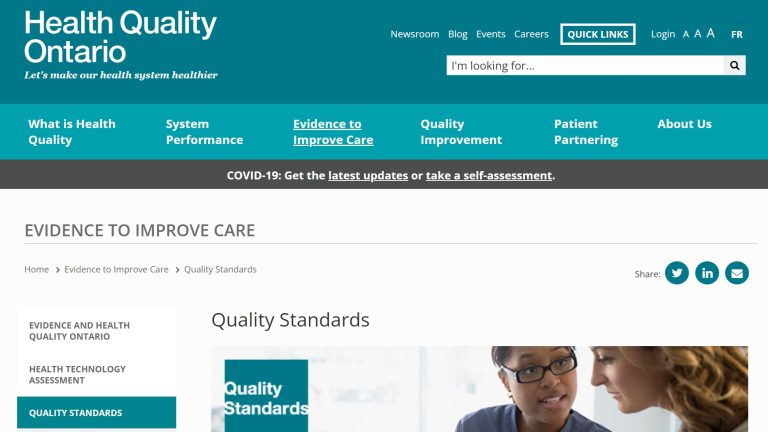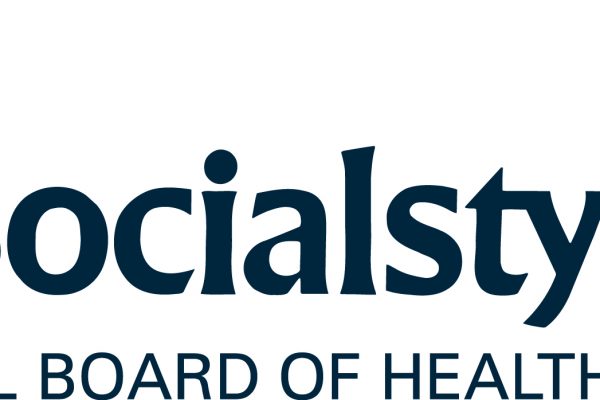Background
Health Quality Ontario (HQO) is an Ontario provincial government body with this stated purpose: “We believe everyone deserves better health and excellent quality care. Our dedicated people are committed to this goal.”
HQO is soliciting feedback on their draft Quality of Care Standard: Ontario Health Draft Quality Standards for Gender-Affirming Care for Gender-Diverse People Care for Adults. You can find the draft quality standard and a link to the survey to send feedback here: https://hqontario.ca/Evidence-to-Improve-Care/Quality-Standards/View-All-Quality-Standards/Gender-Affirming-Care-for-Gender-Diverse-People
The following detailed analysis of the Quality of Care Standard has been submitted by Canadian Gender Report. This Quality Standard is related to adult care, however, HQO indicates within that a Quality Standard for children is in development. Please email them at QualityStandards@OntarioHealth.ca and insist that they first study the Final Report of the Cass Review.
Response to Health Quality Ontario – Care for Adults
Introduction
The fundamental problem with the Quality of Care Standard is that it attempts to measure quality of care in a field of medicine where there are no reliable standards of care or outcome measures. As a result, the only potential outcome metrics are quantity of care and general patient satisfaction. It does not offer any indications of whether the care being provided is appropriate and actually contributes to improved health.
Standards of Care
The starting point for measuring quality of care should be evidence-based treatment guidelines for the treatments being provided. Unfortunately, these guidelines do not exist in gender affirming care. The QCS relies on the treatment guidelines issued by the Rainbow Health Coalition (Bourns, 2023), are guidelines in name only . The Rainbow Health Coalition guidelines do not follow any systematic reviews of evidence or follow any protocols for development of reliable treatment guidelines (Cruz et al., 2015). The Rainbow Health guideline relies heavily on other guidelines with questionable methodology (Cass, 2024): the World Professional Association for Transgender Health Standards of Care, Ver, 7 (WPATH SOC7) (Coleman et al., 2012) and the Endocrine Society Guideline (ESG) (Hembree et al., 2017). An update in 2023 references the WPATH SOC8 (Coleman et al., 2022).
These guidelines are not high-quality evidence-based guidelines. A rapid review conducted by the Canadian Agency for Drugs and Technologies in Health in 2020 identified WPATH SOC7 as the only available evidence-based guideline but concluded, “There is uncertainty associated with this low-quality guideline and its recommendations should be interpreted with caution” (Chen & Loshak, 2020, p. 7).
A systematic review of international clinical practice guidelines in 2021 considered both WPATH SOC7 and the ESG. WPATH SOC7 was rated at 20% for rigour of development and the score on recommendation for use was “Yes 0, No 5, If modified 1.” ESG was rated 41% for rigour of development and the score on recommendation for use was “Yes 1, No 2, If modified 3” (Dahlen et al., 2021).
A systematic review of clinical practice guidelines for children and adolescents commissioned by the Cass Review rated WPATH SOC7 26% for rigour of development, WPATH SOC8 as 35% and the ESG at 42% (Taylor et al., 2024).
A systematic review of the impact of hormone therapy on mental health and quality of life among transgender people was conducted as part of the development process for WPATH SOC8. This review concluded:
This systematic review of 20 studies found evidence that gender-affirming hormone therapy may be associated with improvements in QOL scores and decreases in depression and anxiety symptoms among transgender people. Associations were similar across gender identity and age. The strength of evidence for these conclusions is low due to methodological limitations (Table 6). It was impossible to draw conclusions about the effects of hormone therapy on death by suicide. (Baker et al., 2021)
There are several key issues with this systematic review. First, with the exception of death by suicide, the outcomes examined were limited to subjective measures: quality of life, depression, and anxiety. The review failed to examine objective measures such as global functioning and perhaps most importantly, physical health outcomes, despite well known health risks of hormonal treatment. This review also inexplicably omitted a large higher quality 10-year follow up study which failed to find any benefit of hormonal treatment (Bränström & Pachankis, 2020a, 2020b). It is standard practice in evidence-based medicine that such weak evidence should lead, at most, to a weak recommendation for treatment in the context of further research. Regardless, WPATH proceeded to make strong recommendations for treatment.
The Cass Review also noted a high degree of circularity in the WPATH SOC and ESG. The development teams for both guidelines work together closely. WPATH SOC frequently cite ESG or national guidelines which relied on earlier versions of the WPATH (Cass, 2024, p. 130).
The WPATH Files demonstrate that WPATH is not a trustworthy clinical or scientific organization. The files consist of leaked discussions from an internal WPATH listserv and conference. A recurrent theme in these files is clinicians raising concerns about the potential health impacts of gender affirming treatments only to have them brushed aside by activists, who often have no clinical qualifications (Hughes, 2024).
There is an urgent need for a reliable evidence-based guideline for the treatment of gender dysphoria and gender incongruence in adults as well as children and adolescents. This must be the starting point for any quality-of-care standard.
Adults, Adolescents and Young Adults
The QCS deals only with adults over 18. However, young adults may have health care needs which differ from those of patients who start transition as older adults. Many of these younger adult patients will have started medical transition as children or adolescents and will need support in transitioning from pediatric to adult services.
There are various definitions of young adult. The World Health Organization defines adolescents and young adults as aged 10 to 25 years (World Health Organization, 2023). The Cass Review defines young adults as anyone between the age of 18 and 30 (Cass, 2024, p. 19). The age of majority has limited relevance in health care. Children and adolescents can consent to medical treatment at any age if a doctor determines they have the necessary capacity. However, cognitive capacity continues to develop after the age of 18. The human brain does not reach full maturity until around age 25 and the pre-frontal cortex which controls risk assessment and long -term decision making is one of the last parts to develop (Arain et al., 2013). The ages from 18 to 25 are a vulnerable period when young people have all of the legal capacity of adults but still require support and guidance to make responsible choices.
Many of the young adults now entering the adult care system received puberty blockers and GAHT from a young age. These young people are likely to have different medical needs for the management of ongoing hormone therapy than people who started hormone therapy after the completion of puberty but, since there are no long-term follow-up studies on this cohort, it is not possible to say what these needs are.
Delayed cognitive development is a serious concern for patients who have been on puberty blockers. A recent literature review found that puberty suppression may have negative effects on executive function, social awareness, functional connectivity, brain structure/volume, emotional awareness, IQ, risk-taking, processing speed and memory. These risks have not been adequately studied (Baxendale, 2024) and are sure to impact these young people’s ability to understand the consequences of treatment.
The Cass Review noted that in the English health care system the point of transfer from adolescent to adult services was a period of high clinical risk “which includes increased suicidality, loss to follow-up, extended periods on puberty blockers” (Cass, 2024, p. 224). The Cass Review recommended that the proposed model of regional centres include a follow through service for 17-25 year olds. The exact care model proposed in the Cass Review may not be applicable in Ontario, but the same needs exist. Patients transferring from pediatric to adult care are a small population with unique and complex needs. They should be served, to the extent possible, by a small number of specialist clinics where it will be possible to develop the necessary clinical expertise. Registries can be set up to follow up these patients to monitor costs and benefits of treatment.
The Cass Review also found that there were no outcome studies which follow patients who began medical transition as children and adolescents into adulthood. This type of research is necessary both to aid in decision making for children and adolescents and to inform the ongoing care of these patients when they become adults.
Regret and Detransition
Young adulthood is the period when people who have begun transitioning as children or adolescents may begin to experience regret and seek to detransition. There is no reliable research on the rate of detransition. Studies which have found extremely low rates of detransition and regret suffer from serious methodological flaws such as grossly incomplete follow-up and do not consider the recent cohort of patients who began transition as children and adolescents (Cohn, 2023).
There is evidence that the rates of detransition may be much higher than previously believed. A study of prescription data from the U.S. military health care system found that around 30% of patients prescribed cross-sex hormones did not continue them beyond 4 years (Roberts et al., 2022). A similar study based on Ontario data would be a useful starting point for research on detransition.
Detransitioners may have complex health needs. In some cases, they will need medical support as they discontinue hormones. If they have had their gonads removed, they will need hormone replacement therapy for the rest of their lives. People often detransition because they realize that transition is not improving their mental health and they need to seek alternatives (Littman, 2021; MacKinnon et al., 2022, 2023; Vandenbussche, 2021). Currently, there are no guidelines to support the medical needs of this vulnerable population.
Review of the Quality Statements
Quality Statement 1: Gender-Affirming Education and Training for Health Care Teams
That health care training should be appropriate is a given, but there are serious problems with current training practices in gender-affirming care. The first, as discussed above, is that the training is in the WPATH model of care which is not evidence-based and is deeply flawed. The second is that the model is being taught in a dogmatic way with no opportunity for questioning or consideration of alternative perspectives. Training should be informed by best international practices and allow for continuous improvement through open exchange of views.
Quality Statement 2: Gender Affirming Primary Care
The QCS refers to “trans broken arm syndrome” in which “a clinician incorrectly assumes that a medical condition is related to a person’s gender identity or medical transition” (p.14). This concept is based on an online survey of patient reported cases of “gender-related medical misattribution and invasive questioning” (Wall et al., 2023).
This type of patient self perception survey fails to take into account the extent to which the health problems of transegender people are attributable to hormone therapy. Low bone mineral density is a known risk of puberty suppression and gender affirming hormone therapy (Biggs, 2021). A broken arm might be an indication that a patient’s bone density is dangerously low and discontinuation of hormone therapy is indicated. The QCS itself describes some of the quite serious risks of giving people higher doses of testosterone and estrogen than their bodies would naturally produce. The QCS refers to up-to date routine screening for factors such as cancer, bone mineral density and sexual health as a quality-of-care indicator, but it fails to consider what is to be done with this information.
The real risk to gender diverse patients is that neither they nor their doctors will be prepared to consider the possibility that GAHT may cause harm and should be discontinued. The WPATH Files document multiple cases of doctors pushing ahead with hormone therapy despite clear evidence that the patient was suffering physically and mentally (Hughes, 2024). This concern has also been raised by whistleblowers from pediatric gender clinics (Reed, 2023). It is unlikely that the situation is any better in adult practice.
Quality Statement 3: Gender-Affirming Hormone Therapy
The QCS treats expanding the number of primary care providers who are able to initiate and supervise gender-affirming hormone therapy (GAHT) as an indicator of care quality. However, increased availability of a treatment does not equate to increased quality of care if the treatment is not helpful and is not being prescribed appropriately. In fact, increasing the number of primary care providers providing unevidenced treatments with known medical risks may, in fact, be counter to quality care.
The QCS relies on the Rainbow Health treatment guideline which is not a reliable evidence-based guideline. The Rainbow Health guideline is considerably less restrictive than the WPATH and ESG in its requirements for assessment. WPATH SOC8 recommends that assessments of adults be conducted by licensed professionals who are “able to identify co-existing mental health or other psychosocial concerns and distinguish these from gender dysphoria, incongruence, and diversity” (Coleman et al., 2022, p. S32). The ESG has a similar recommendation (Hembree et al., 2017, p. 3870). Rainbow Health argues that primary care providers are able to make a diagnosis of gender dysphoria and that referral to a psychiatrist is required only when the presentation is unclear (Bourns, 2023, p. 19). It also fails to acknowledge the presence of gender dysphoria is not prima facie evidence that an individual is transgender and therefore should transition. It is well established that gay, lesbian and bisexual individuals frequently experience gender dysphoria. As such careful exploration with a qualified provider is warranted.
There is no evidence that diluting the requirements for assessment by a mental health specialist will improve quality of care. Many gender diverse people have complex mental health and neuro-developmental conditions which a primary care provider is not qualified to diagnose. Starting on GAHT or surgery without proper assessment of co-existing mental health conditions is a common complaint of detransitioners (Littman, 2021; Vandenbussche, 2021) and what Dr. Cass refers to as diagnostic overshadowing.
There may be situations in remote areas where it is necessary for primary care providers to manage prescriptions for GAHT, but because of the complex and serious side effects that can result from GAHT it would be safer for these prescriptions to be managed by trained specialists.
Quality Statement 4: Gender-Affirming Mental Health Care
This section is based on a series of faulty assumptions. It takes as a given the minority stress hypothesis which holds that the poor mental health experienced by gender-diverse people is primarily the result of experiences of marginalization and victimization. It also invokes the concept of the “trans broken arm syndrome” which faults clinicians for assuming a connection between a person’s mental health problems and their gender identity. The unstated assumption that underlies both these statements is that a person’s gender identity is entirely intrinsic and not connected with their overall mental health and developmental processes.
The minority stress hypothesis is part of a larger movement to remake therapy as an aspect of critical social justice in which the role of the therapist “is now to facilitate collective rather than individual change” (Thomas, 2023, p. 41). This approach is not compatible with good patient care. Rather than encouraging self-reflection the development of self-reliant solutions it teaches clients to regard modifying the behaviour of others as the primary way of dealing with their distress.
Minority stress is also an inadequate explanation of the mental health problems gender diverse people face. It does not account for the mental distress gender-diverse people frequently experience before they have “come out” and exposed themselves to social stigma. Nor does it explain the high prevalence of neurodevelopmental conditions such as autism spectrum disorder among gender diverse people.
Supporters of the gender affirming care model assert that gender diversity is simply a normal and healthy variation of the human condition and never has an underlying pathology. This assertion is made without evidence and is demonstrably false. There are numerous case reports which show a connection between gender diversity and psychosis. WPATH acknowledges that there may be a psychotic form of gender dysphoria. Unfortunately, as psychiatrist Andrew Amos notes, “Despite this, the WPATH standards appear more concerned that comorbid psychosis might prevent gender diverse patients from accessing the GAMOC [gender affirming model of care] than that patients with psychosis might be harmed by the affirmation of psychotic beliefs” (Amos, 2024).
The imperative to push ahead with gender affirming procedures despite whatever other mental health problems a patient may be experiencing can lead clinicians down strange pathways. The WPATH Files include a series of discussions about performing surgery on patients with Dissociative Identity Disorder (formerly known as Multiple Personality Disorder). Some of these patients may have up to 100 “alters” each with a different gender identity. The consensus was that surgery was ethically appropriate provided that the surgeon sought and received consent from each of the “alters” (Hughes, 2024, pp. 44–45).
Autism spectrum disorders are strongly associated with gender diversity and this creates a particular problem in females where autism is more difficult to diagnose and may not be diagnosed until adulthood. During puberty, females on the autism spectrum often experience social difficulties or difficulties adjusting to their growing bodies. This may lead to a misdiagnosis or self-diagnosis for gender dysphoria followed by GAHT and surgery. They may not realize the true source of their distress until they finally receive an autism diagnosis (Buttons, 2023). In Ontario, there are clinics which will issue a prescription for GAHT after a short consultation with a nurse practitioner while an autism screening may have a waiting list of many months (anon, 2021).
This is not to say that people on the autism spectrum or with other mental health conditions should never be considered for GAHT. However, gender diverse people who seek GAHT are often seeking relief from ongoing psychological distress. If they do not have a full mental health assessment so that they understand all of the causes of their distress it is likely that their mental health will not improve, and may even deteriorate, on GAHT and regret beginning a course of GAHT
A study of Finnish registry data found that patients referred to a gender identity service had much higher psychiatric needs than matched control groups and that these needs did not decrease with medical transition (Kaltiala et al., 2023).
The quality indicators for mental health relate to customer satisfaction rather than actual improved health. The first indicator, the percentage of gender-diverse adults who “feel their mental health is good” is not a robust reliable outcome measure. It is a subjective measure that does not take into account the placebo effect (A. Clayton, 2022) and cognitive dissonance. More objective measures of mental health such as the decrease in prescriptions of antidepressants and anxiolytics, and global functioning measures should be collected. Access to a comprehensive care plan that affirms gender identity and expression will not lead to good mental health if it does not include full exploration of all potential causes of mental distress, including those closely linked to gender identity.
Quality Statement 5: Gender-Affirming Health Care Environments
Clinicians need to balance the benefits of affirming a gender-diverse patient’s gender identity with the importance of the patient’s sex to clinical care. Gender diverse patients need to understand that their sex will not change as a result of GAHT or surgery and failing to record sex accurately in the patient’s records and communicate it to health care providers can put the patient at risk (Dahlen, 2020).
Sex impacts many aspects of medical diagnosis and treatment including the symptoms of various diseases, the normal ranges and interpretation of test results and appropriate drug doses (Bhargava et al., 2021). Many laboratory pathology tests are sex specific and in some cases the results may be affected by cross-sex hormones (Cheung et al., 2021). There is evidence that sex mismatches can lead to adverse outcomes in blood transfusions (Alshalani et al., 2019).
Not knowing a patient’s sex can lead to serious medical errors. One case report described a transgender male who presented at emergency and reported intermittent lower abdominal pain. The triage nurse assessed the likely problem as failure to take prescribed blood pressure medication and classified the case as non-urgent. When a doctor examined the patient it was found that the patient was pregnant and required an emergency caesarean delivery. The baby was stillborn (Stroumsa Daphna et al., 2019). Another case report describes a transgender man (that is, a biological female) was brought to the emergency department unconscious and required emergency intubation. The emergency room doctors used a tube intended for biological males and the result was severe tracheal stenosis (Lao & Crawley, 2021).
Using phrases like “people with a prostate” or “people with a cervix” is promoted as inclusive but in fact decreases inclusivity. These types of phrases may not be easily understood by people with limited education or neurodevelopmental challenges or by people who are learning English as an additional language. They are also dehumanizing in that they reduce a human experience to a seemingly random collection of parts (Gribble et al., 2022). A female is more than a person with a cervix and a male is more than a person with a penis. Even if these parts are removed people remain male and female in medically significant ways. Even the phrase “sex assigned at birth” is harmful since it creates the false impression that sex is arbitrarily determined rather than observed with greater than 99.98% accuracy. The movement to limit the use of sex in health records or to use gender in place has vast large-scale consequences not only for transgender individuals, but the general population. Accurate health records enable accurate data collection for research that sets policy (J. A. Clayton & Tannenbaum, 2016). Health records that replace sex with gender identity alter the AI algorithms behind the interface of electronic health records doctors use, potentially increasing the risk of diagnostic errors (Buslón et al., 2023).
References
Alshalani, A., Li, W., Juffermans, N. P., Seghatchian, J., & Acker, J. P. (2019). Biological mechanisms implicated in adverse outcomes of sex mismatched transfusions. Transfusion and Apheresis Science, 58(3), 351–356. https://doi.org/10.1016/j.transci.2019.04.023
Amos, A. (2024). The gender-affirming model of care is incompatible with competent, ethical medical practice. Australasian Psychiatry, 10398562241239478. https://doi.org/10.1177/10398562241239478
anon. (2021, January 20). “We did what the experts told us”—A Canadian family shares their story. Canadian Gender Report. https://genderreport.ca/canada-gender-transition-detransition/
Arain, M., Haque, M., Johal, L., Mathur, P., Nel, W., Rais, A., Sandhu, R., & Sharma, S. (2013). Maturation of the adolescent brain. Neuropsychiatric Disease and Treatment, 9, 449–461. https://doi.org/10.2147/NDT.S39776
Baker, K. E., Wilson, L. M., Sharma, R., Dukhanin, V., McArthur, K., & Robinson, K. A. (2021). Hormone Therapy, Mental Health, and Quality of Life Among Transgender People: A Systematic Review. Journal of the Endocrine Society, 5(4), bvab011. https://doi.org/10.1210/jendso/bvab011
Baxendale, S. (2024). The impact of suppressing puberty on neuropsychological function: A review. Acta Paediatrica, 00, 1–12. https://doi.org/10.1111/apa.17150
Bhargava, A., Arnold, A. P., Bangasser, D. A., Denton, K. M., Gupta, A., Hilliard Krause, L. M., Mayer, E. A., McCarthy, M., Miller, W. L., Raznahan, A., & Verma, R. (2021). Considering Sex as a Biological Variable in Basic and Clinical Studies: An Endocrine Society Scientific Statement. Endocrine Reviews, bnaa034. https://doi.org/10.1210/endrev/bnaa034
Biggs, M. (2021). Revisiting the effect of GnRH analogue treatment on bone mineral density in young adolescents with gender dysphoria. Journal of Pediatric Endocrinology and Metabolism. https://doi.org/10.1515/jpem-2021-0180
Bourns, D. A. (2023). Guidelines for Gender-Affirming Primary Care with Trans and Non-Binary Patients. Rainbow \Health Ontario: Sherbourne Health. https://www.rainbowhealthontario.ca/wp-content/uploads/2021/09/Guidelines-FINAL-4TH-EDITION-With-2023-Updates.pdf
Bränström, R., & Pachankis, J. E. (2020a). Reduction in Mental Health Treatment Utilization Among Transgender Individuals After Gender-Affirming Surgeries: A Total Population Study. American Journal of Psychiatry, 177(8), 727–734. https://doi.org/10.1176/appi.ajp.2019.19010080
Bränström, R., & Pachankis, J. E. (2020b). Toward Rigorous Methodologies for Strengthening Causal Inference in the Association Between Gender-Affirming Care and Transgender Individuals’ Mental Health: Response to Letters. American Journal of Psychiatry, 177(8), 769–772. https://doi.org/10.1176/appi.ajp.2020.20050599
Buslón, N., Cortés, A., Catuara-Solarz, S., Cirillo, D., & Rementeria, M. J. (2023). Raising awareness of sex and gender bias in artificial intelligence and health. Frontiers in Global Women’s Health, 4. https://doi.org/10.3389/fgwh.2023.970312
Buttons, C. (2023, March 24). How Autistic Traits Can Be Mistaken For Gender Dysphoria [Substack newsletter]. Buttonslives. https://buttonslives.substack.com/p/how-autistic-traits-can-be-mistakenre
Cass, H. (2024). The Cass Review: Independent review of gender identity services for children and young people. https://cass.independent-review.uk/wp-content/uploads/2024/04/CassReview_Final.pdf
Chen, S., & Loshak, H. (2020). Primary Care Initiated Gender-Affirming Therapy for Gender Dysphoria: A Review of Evidence Based Guidelines. Canadian Agency for Drugs and Technologies in Health. http://www.ncbi.nlm.nih.gov/books/NBK563451/
Cheung, A. S., Lim, H. Y., Cook, T., Zwickl, S., Ginger, A., Chiang, C., & Zajac, J. D. (2021). Approach to Interpreting Common Laboratory Pathology Tests in Transgender Individuals. The Journal of Clinical Endocrinology and Metabolism, 106(3), 893–901. https://doi.org/10.1210/clinem/dgaa546
Clayton, A. (2022). Gender-Affirming Treatment of Gender Dysphoria in Youth: A Perfect Storm Environment for the Placebo Effect—The Implications for Research and Clinical Practice. Archives of Sexual Behavior. https://doi.org/10.1007/s10508-022-02472-8
Clayton, J. A., & Tannenbaum, C. (2016). Reporting Sex, Gender, or Both in Clinical Research? JAMA, 316(18), 1863–1864. https://doi.org/10.1001/jama.2016.16405
Cohn, J. (2023). The Detransition Rate Is Unknown. Archives of Sexual Behavior, 52, 1937–1952. https://doi.org/10.1007/s10508-023-02623-5
Coleman, E., Bockting, W., Botzer, M., Cohen-Kettenis, P., DeCuypere, G., Feldman, J., Fraser, L., Green, J., Knudson, G., Meyer, W. J., Monstrey, S., Adler, R. K., Brown, G. R., Devor, A. H., Ehrbar, R., Ettner, R., Eyler, E., Garofalo, R., Karasic, D. H., … Zucker, K. (2012). Standards of Care for the Health of Transsexual, Transgender, and Gender-Nonconforming People, Version 7. International Journal of Transgenderism, 13(4), 165–232. https://doi.org/10.1080/15532739.2011.700873
Coleman, E., Radix, A. E., Bouman, W. P., Brown, G. R., de Vries, A. L. C., Deutsch, M. B., Ettner, R., Fraser, L., Goodman, M., Green, J., Hancock, A. B., Johnson, T. W., Karasic, D. H., Knudson, G. A., Leibowitz, S. F., Meyer-Bahlburg, H. F. L., Monstrey, S. J., Motmans, J., Nahata, L., … Arcelus, J. (2022). Standards of Care for the Health of Transgender and Gender Diverse People, Version 8. International Journal of Transgender Health, 23(sup1), S1–S259. https://doi.org/10.1080/26895269.2022.2100644
Cruz, J. E., Fahim, G., & Moore, K. (2015). Practice Guideline Development, Grading, and Assessment. P & T, 40(12), 854–857.
Dahlen, S. (2020). De-sexing the Medical Record? An Examination of Sex Versus Gender Identity in the General Medical Council’s Trans Healthcare Ethical Advice. The New Bioethics. https://www.tandfonline.com/doi/abs/10.1080/20502877.2020.1720429
Dahlen, S., Connolly, D., Arif, I., Junejo, M. H., Bewley, S., & Meads, C. (2021). International clinical practice guidelines for gender minority/trans people: Systematic review and quality assessment. BMJ Open, 11(4), e048943. https://doi.org/10.1136/bmjopen-2021-048943
Gribble, K., Bartick, M., Bewley, S., Mathisen, R., Walker, S., Gamble, J., Bergmann, N., Gupta, A., Hocking, J., & Dahlen, H. (2022). Effective communication about pregnancy, birth, lactation, breastfeeding and newborn care: The importance of sexed language. Frontiers in Global Women’s Health, 3, 3. https://doi.org/10.3389/fgwh.2022.818856
Hembree, W. C., Cohen-Kettenis, P. T., Gooren, L., Hannema, S. E., Meyer, W. J., Murad, M. H., Rosenthal, S. M., Safer, J. D., Tangpricha, V., & T’Sjoen, G. G. (2017). Endocrine Treatment of Gender-Dysphoric/Gender-Incongruent Persons: An Endocrine Society Clinical Practice Guideline. The Journal of Clinical Endocrinology & Metabolism, 102(11), 3869–3903. https://doi.org/10.1210/jc.2017-01658
Hughes, M. (2024). The WPATH Files: Pseudoscientific surgical and hormonal experiments on children, adolescents, and vulnerable adults. Environmental Progress. https://static1.squarespace.com/static/56a45d683b0be33df885def6/t/65e64b9e5cbd756da9fbbdfa/1709591479160/Final+WPATH+Report.pdf
Kaltiala, R., Holttinen, T., & Tuisku, K. (2023). Have the psychiatric needs of people seeking gender reassignment changed as their numbers increase? A register study in Finland. European Psychiatry, 66(1), e93. https://doi.org/10.1192/j.eurpsy.2023.2471
Lao, W. P., & Crawley, B. K. (2021). Airway Considerations in Transgender Patients: Complicated Intubation. Ear, Nose & Throat Journal, 100(5_suppl), 755S-756S. https://doi.org/10.1177/0145561320910680
Littman, L. (2021). Individuals Treated for Gender Dysphoria with Medical and/or Surgical Transition Who Subsequently Detransitioned: A Survey of 100 Detransitioners. Archives of Sexual Behavior. https://link.springer.com/article/10.1007%2Fs10508-021-02163-w
MacKinnon, K. R., Gould, W. A., Enxuga, G., Kia, H., Abramovich, A., Lam, J. S. H., & Ross, L. E. (2023). Exploring the gender care experiences and perspectives of individuals who discontinued their transition or detransitioned in Canada. PLOS ONE, 18(11), e0293868. https://doi.org/10.1371/journal.pone.0293868
MacKinnon, K. R., Kia, H., Salway, T., Ashley, F., Lacombe-Duncan, A., Abramovich, A., Enxuga, G., & Ross, L. E. (2022). Health Care Experiences of Patients Discontinuing or Reversing Prior Gender-Affirming Treatments. JAMA Network Open, 5(7), e2224717. https://doi.org/10.1001/jamanetworkopen.2022.24717
Reed, J. (2023, February 9). I Thought I Was Saving Trans Kids. Now I’m Blowing the Whistle. The Free Press. https://www.thefp.com/p/i-thought-i-was-saving-trans-kids
Roberts, C. M., Klein, D. A., Adirim, T. A., Schvey, N. A., & Hisle-Gorman, E. (2022). Continuation of Gender-affirming Hormones Among Transgender Adolescents and Adults. The Journal of Clinical Endocrinology & Metabolism, 107(9), e3937–e3943. https://doi.org/10.1210/clinem/dgac251
Stroumsa Daphna, Roberts Elizabeth F.S., Kinnear Hadrian, & Harris Lisa H. (2019). The Power and Limits of Classification—A 32-Year-Old Man with Abdominal Pain. New England Journal of Medicine, 380(20), 1885–1888. https://doi.org/10.1056/NEJMp1811491
Taylor, J., Hall, R., Heathcote, C., Hewitt, C. E., Langton, T., & Fraser, L. (2024). Clinical guidelines for children and adolescents experiencing gender dysphoria or incongruence: A systematic review of guideline quality (part 1). Archives of Disease in Childhood. https://doi.org/10.1136/archdischild-2023-326499
Thomas, V. (Ed.). (2023). Cynical Therapies: Perspectives on the Antitherapeutic Nature of Critical Social Justice. Ocean Reeve Publishing.
Vandenbussche, E. (2021). Detransition-Related Needs and Support: A Cross-Sectional Online Survey. Journal of Homosexuality, 69(9), 1–19. https://www.tandfonline.com/doi/abs/10.1080/00918369.2021.1919479
Wall, C. S. J., Patev, A. J., & Benotsch, E. G. (2023). Trans broken arm syndrome: A mixed-methods exploration of gender-related medical misattribution and invasive questioning. Social Science & Medicine (1982), 320, 115748. https://doi.org/10.1016/j.socscimed.2023.115748
World Health Organization. (2023, April 28). Adolescent and young adult health. https://www.who.int/news-room/fact-sheets/detail/adolescents-health-risks-and-solutions




